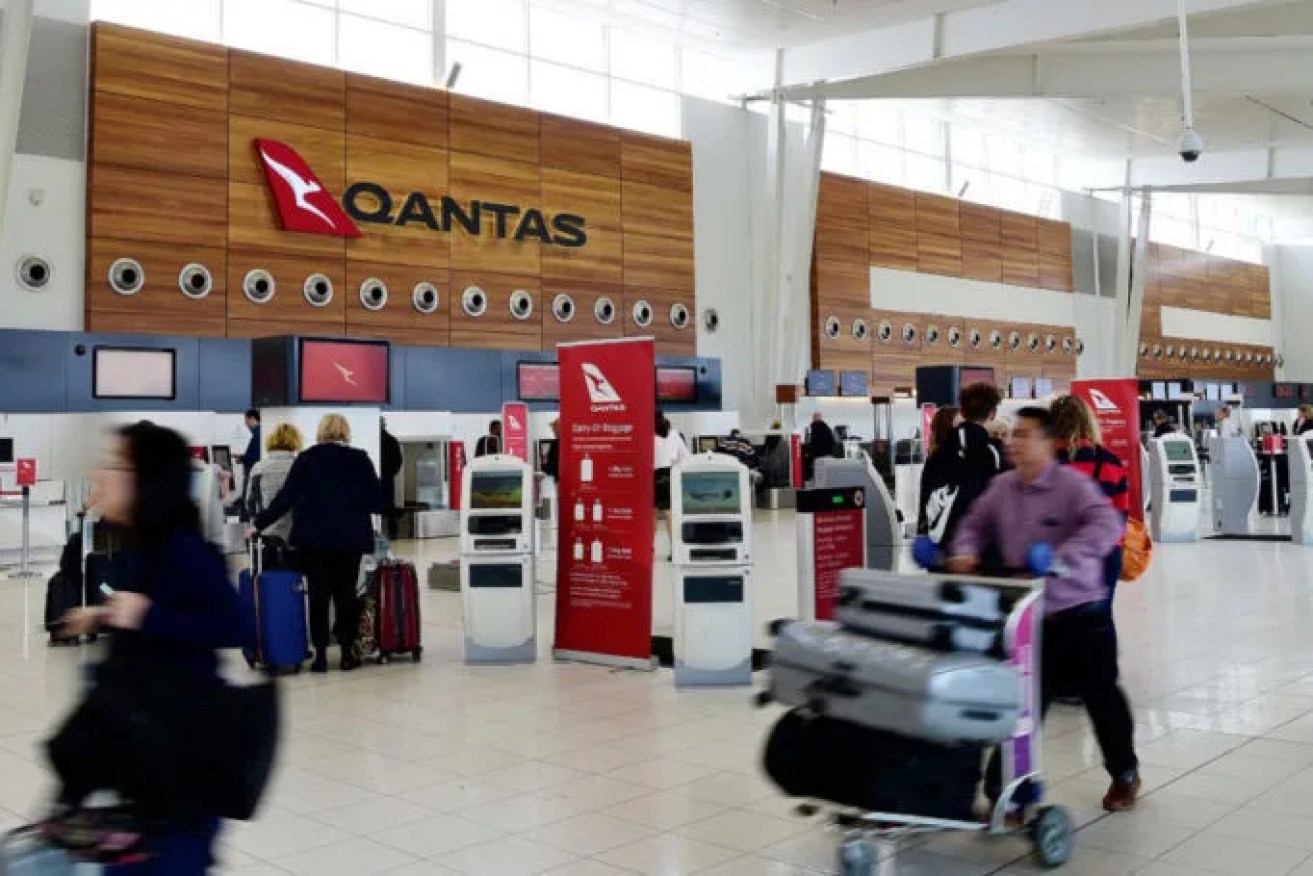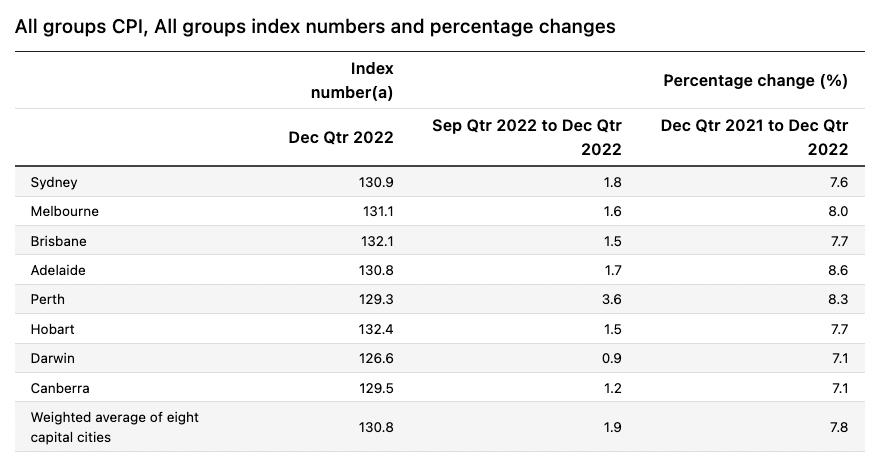Inflation hits highest increase since 1990
Inflation rose 7.8 per cent annually in the December quarter with holidays and electricity prices among the factors driving the increase.

Domestic and international travel costs have soared, driving CPI increases.
This is the highest annual consumer price index increase since 1990, with Adelaide recording the biggest increase of any capital city over the 12 months to December 2022.
Quarterly inflation lifted 1.9 per cent, according to data from the national statistics bureau.
In the final quarter of 2022, underlying inflation, which excludes large price rises and falls, lifted 6.9 per cent annually.
Services inflation lifted a notable 5.5 per cent over the 12 months largely thanks to higher prices for holiday, travel and meals out.
BIS Oxford Economics head of macroeconomic forecasting Sean Langcake said mounting services inflation suggested higher wages were starting to flow through to higher prices.
Over the December quarter, domestic holiday travel and accommodation surged 13.3 per cent and and international holidaying lifted 7.6 per cent.
“Strong demand, particularly over the Christmas holiday period, contributed to price rises for domestic holiday travel and international airfares,” ABS head of prices statistics Michelle Marquardt said.
As economists warned, soaring electricity prices also showed up in the December quarter – lifting 8.6 per cent over the three months.
“The main factor influencing the rise in electricity prices was the unwinding of the $400 electricity credit offered by the Western Australian government to all households last quarter,” Marquardt said, although she said this was somewhat offset by new rebates offered by other states.
New dwelling costs are still elevated on an annual basis but quarterly growth eased.
“Labour and material costs are driving price growth in this area, with signs of material cost pressures easing,” Marquardt said.
Goods inflation experienced little change from the September quarter as shipping costs normalise and supply-chain disruptions ease.
Inflation started surging last year due to ongoing disruptions from COVID-19, the war in Ukraine and strong post-pandemic consumer demand.
In the September quarter, headline inflation rose 7.3 per cent annually and 1.8 per cent over the quarter.
This followed another 1.8 per cent lift over the June quarter.
Rising inflation prompted the Reserve Bank to start hiking interest rates from a historic low level of 0.1 per cent.
The official cash rate is now 3.1 per cent.
The RBA expected inflation to peak at around eight per cent in the December quarter before easing over 2023 and 2024.
Others anticipated a more moderate reading following softer-than-expected monthly CPI reports in October and November.
Langcake said headline inflation fell short of the RBA’s peak prediction but was still well above the central bank’s two to three per cent target range.
“While this is expected to be the peak in inflation in this cycle, the RBA’s hawkish communications lead us to expect another rate rise in February, with another increase likely to follow in March.”
Adelaide recorded the highest CPI increase of the Australian capitals, over the 12 months to December 2022.

Source: Australian Bureau of Statistics
more to come
– AAP




